About
A genetically modified organism (GMO) is any organism whose genotype has been altered using genetic engineering techniques such as gene deletion, gene overexpression, and insertion mutation.
A gene is declared differentially expressed if a difference or change observed in read counts or expression levels between two conditions (here, after and before genetic perturbation) is statistically significant.
Gene expression data of a GMO is measured using microarray, bulk RNA-Seq and scRNA-Seq, et al. For microarray data, Limma is used for differential gene analysis. For bulk RNA-Seq data, hisat2/featurecounts are used, while CellRanger is applied for scRNA-Seq data. A p-value of 0.05 is considered statistically significant. If more than 1000 DEGs were found, only the top 1000 DEGs ranked by absolute log2 fold change were selected for downstream analysis.
PertOrg Function Introduction
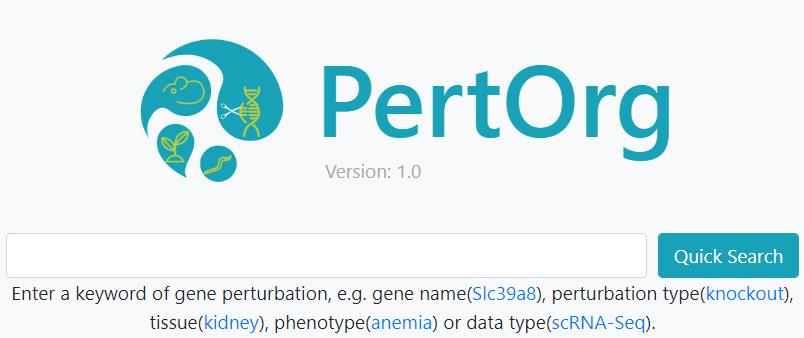
Fuzzy query is enabled. In the main page, perturbation datasets can be quickly searched by gene symbol, gene ID, perturbation Type (knockdown, knockout or overexpression), phenotype or data type (RNA-Seq, scRNA-Seq or microarray).
Search result page
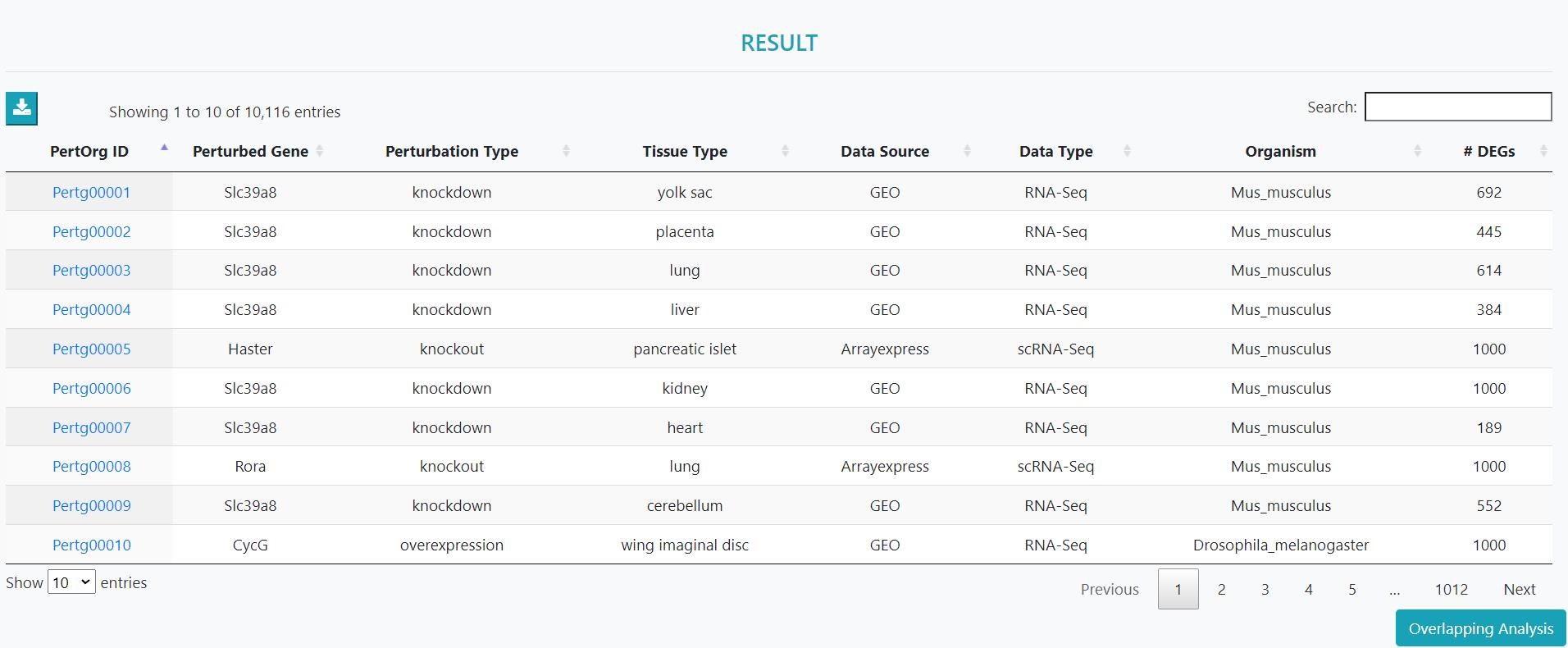
Perturbation datasets meeting the criteria are listed. Clicking on the dataset ID will lead to the detailed information page.
If more than 1 perturbation dataset were found, further overlapping analysis will be provided. The overlapping downstream DEGs of gene perturbations will be shown in a network, while common functions/pathways of perturbed genes will be analyzed.
Detailed information page



The detailed information page contains the available perturbation information, altered phenotypes, differential genes, enriched regulations/functions/pathways, differential cell type markers by the genetic perturbation.
Besides the overall analysis, the single-cell cluster analysis will generate the cell clustering plot with cell type annotation when available, cluster marker genes and differential genes in clusters.
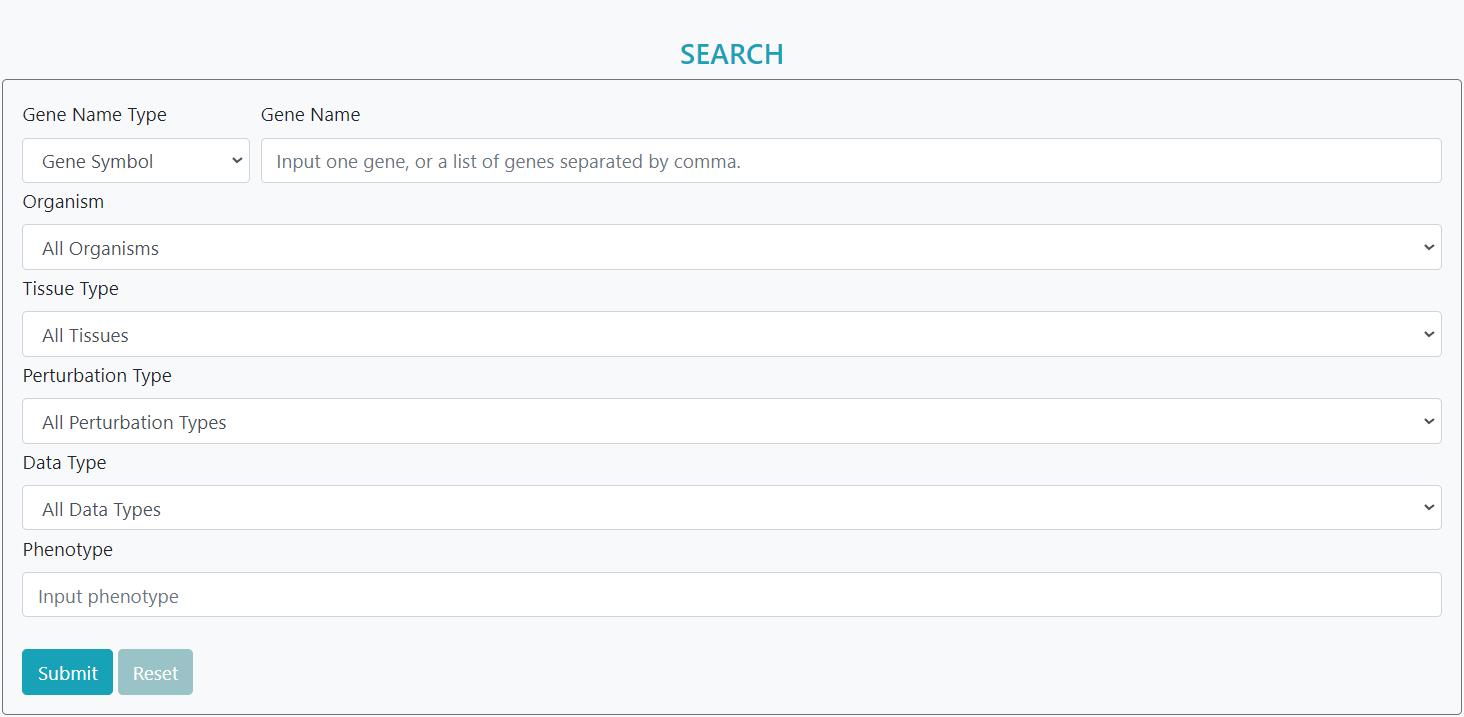
Advanced and more accurate search was developed based on the matchings of features of perturbation dataset including Gene ID, Gene Name, perturbation type, organisms, tissue type and phenotype.
Step 1: Input Gene name/ID, phenotype
Step 2: Select types, e.g. perturbation type, data type, tissue type
Step 3: Submit
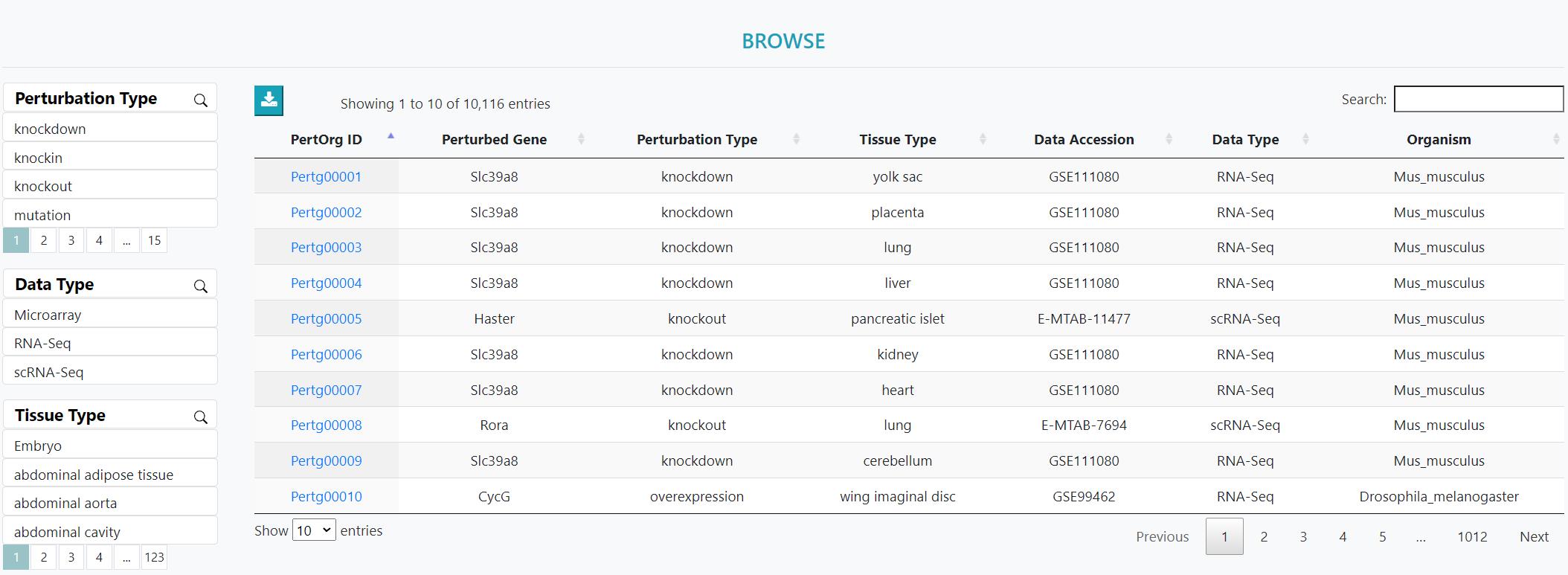
The list of perturbation datasets could be viewed in an interactive table on this page. Users can customize filters using "Perturbation Type", "Data Type", "Tissue Type" and "Organism". Then users can click on "Dataset ID" to view the corresponding detailed information page.

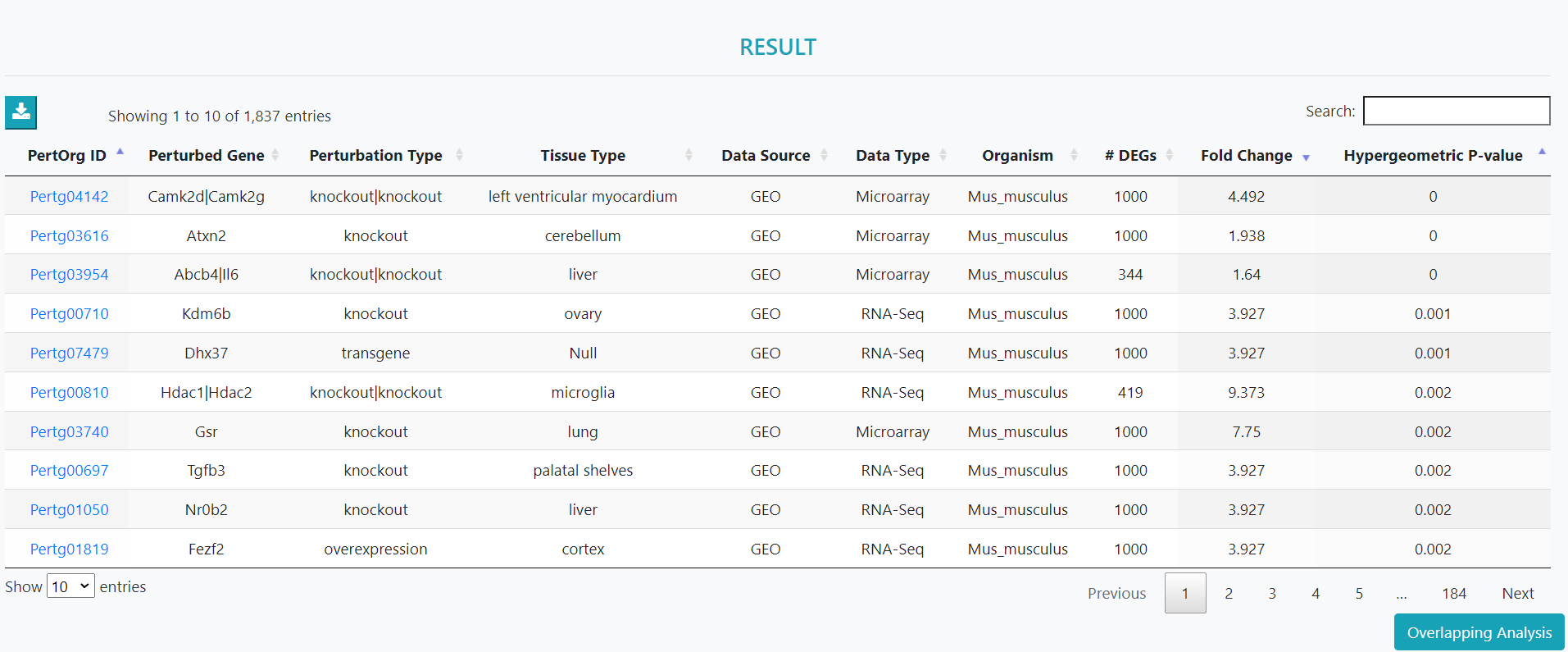
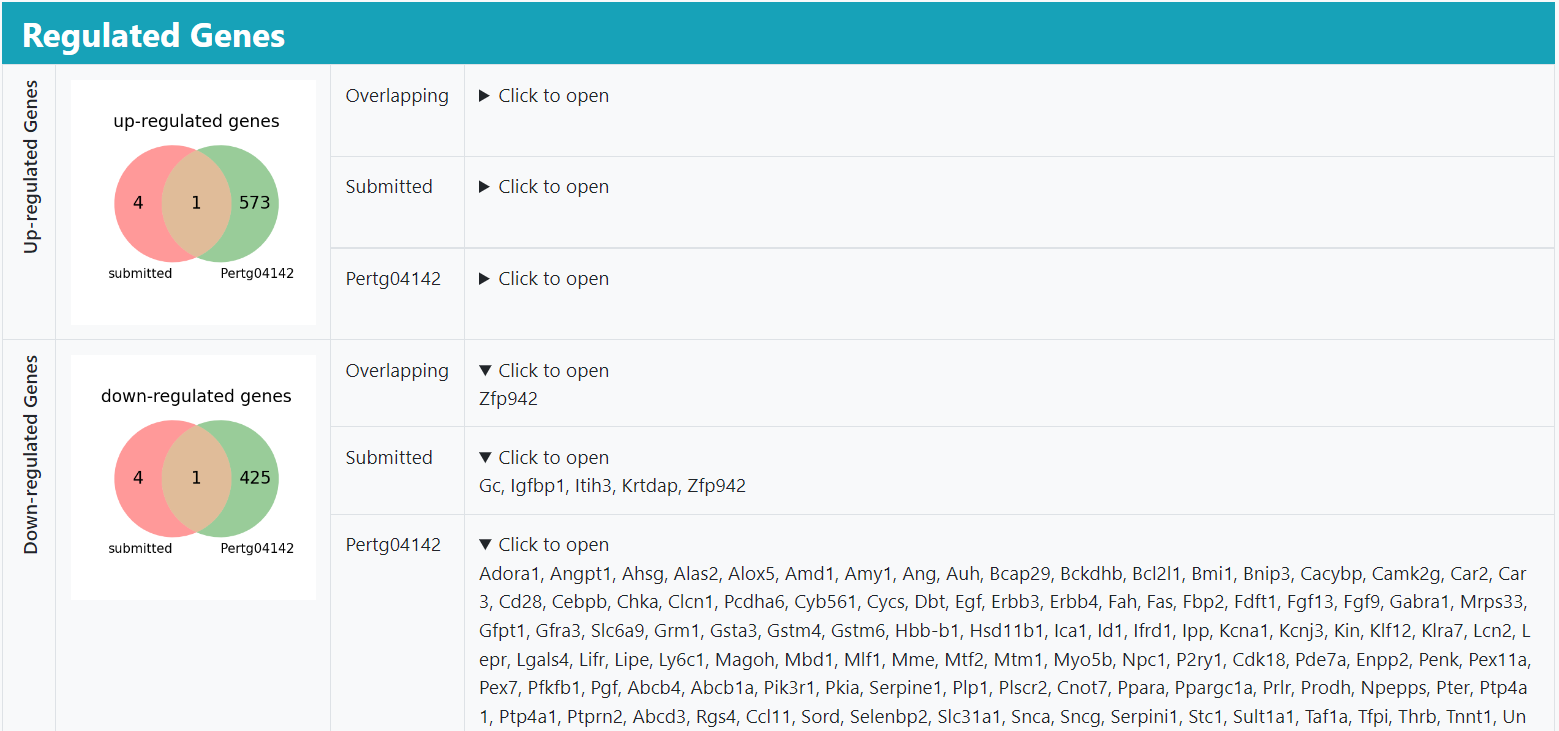
>Differential Gene Overlapping Analysis
Differential Gene Overlapping Analysis helps to investigate the perturbation datasets which are significantly enriched in the user-given gene set by hypergeometric test. It can also allow users to search DEGs in PertOrg.
Step 1: Select an organism.
Step 2: Select a gene type e.g. up-regulated gene, down-regulated gene or differential gene.
Step 3: Input the gene name(s)/ID(s), multiple items should be separated using commas, e.g., "14,18,52"
Step 4: Submit
As the results, the PertOrg datasets in which DEG list includes submitted genes are given. Hypergeometric p-values are provided for each dataset.

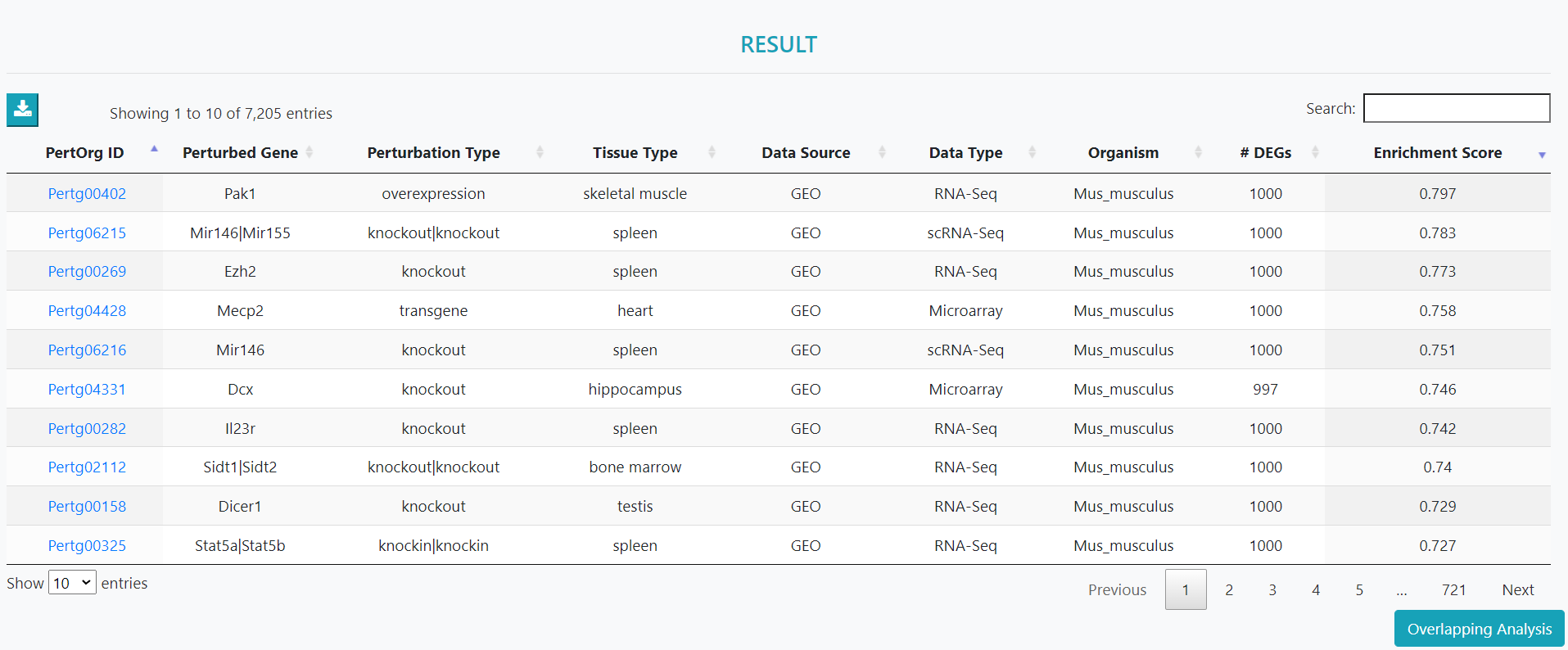
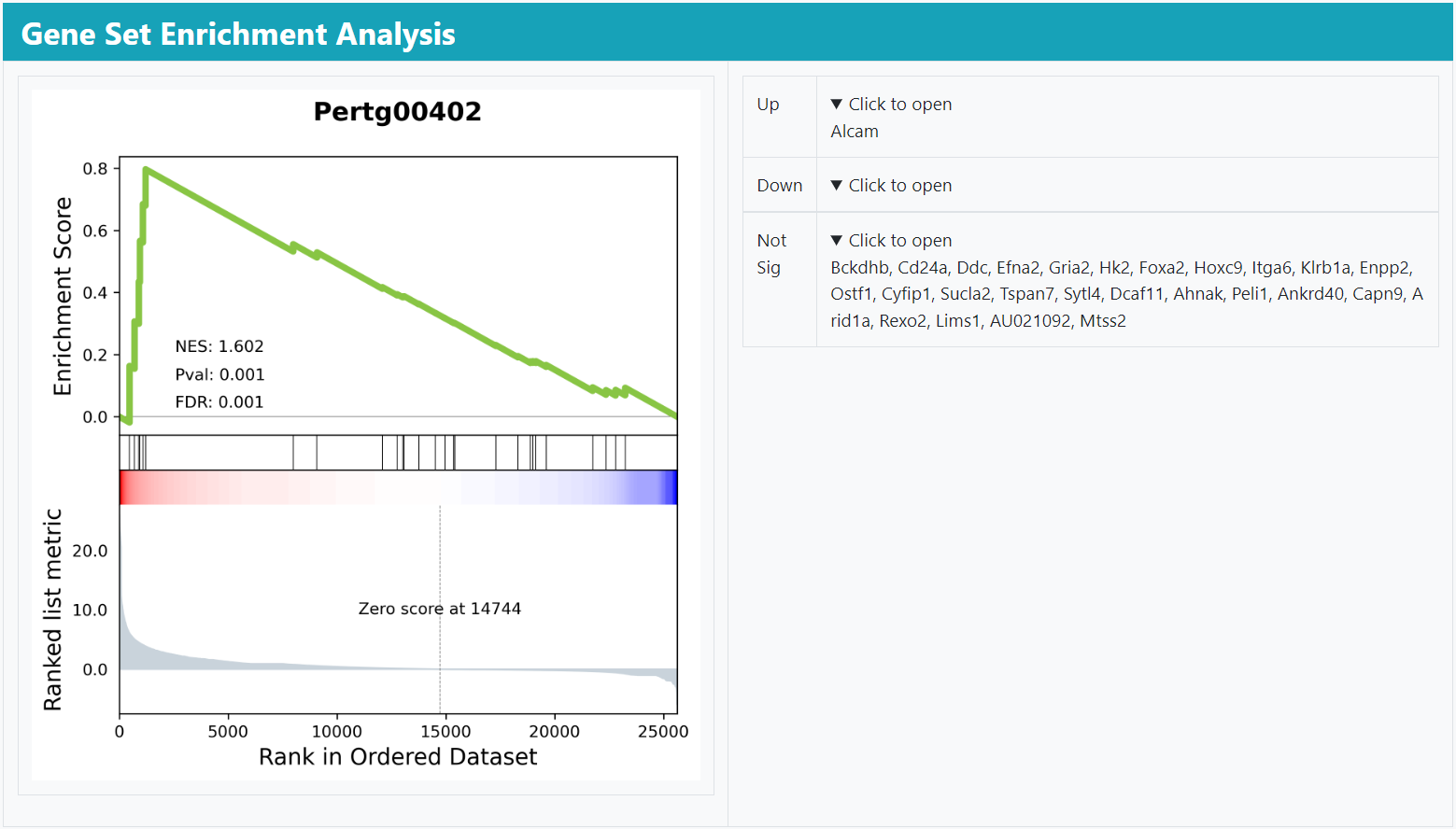
>Dataset Enrichment Analysis
Dataset Enrichment Analysis helps to identify the perturbation datasets in which the user-given gene set are over-represented.
Step 1: Select an organism.
Step 2: Select a gene type e.g. up-regulated gene, down-regulated gene or differential gene.
Step 3: Input the gene name(s)/ID(s), multiple items should be separated using commas, e.g., "14,18,52"
Step 4: Submit
As the results, the PertOrg datasets in which user submitted genes are over-represented given. Enrichment scores are provided for each dataset.

In the "Statistics" page, the statistics of the perturbation datasets in multiple perspectives are illustrated.

In the Download page, the information of perturbation datasets, available DEGs, differential gene expression analysis result and gene expression profile of each dataset can be downloaded.

Although an increasing number of perturbation datasets are expected to be collected, many available datasets could still be missed. Therefore, users are encouraged to submit their dataset that meets PertOrg criteria for future integration. PertOrg allows users to submit perturbed genes, perturbation types, tissue types, data types and organisms, as well as a link to their data sources on the "Submit" page. Once the submission is received, data will be carefully evaluated and further processed using our standard procedures in PertOrg, as described in the Material and Methods section. Finally, the dataset and the corresponding analysis results will be included in the future release of PertOrg.

On the help page, the introduction of the features and the guidelines for the functions are stated. The contact details are attached at the bottom.
Contact Us
- Please feel free to contact Prof. Jianbo Pan with respect to any details pertaining to PertOrg.
-
>Address :
Center for Novel Target and Therapeutic Intervention, Institute of Life Sciences, Chongqing Medical University,
No. 1 Yixueyuan Road, Yuzhong District, Chongqing, 400016, P. R. China.
-
>Email :
panjianbo@cqmu.edu.cn